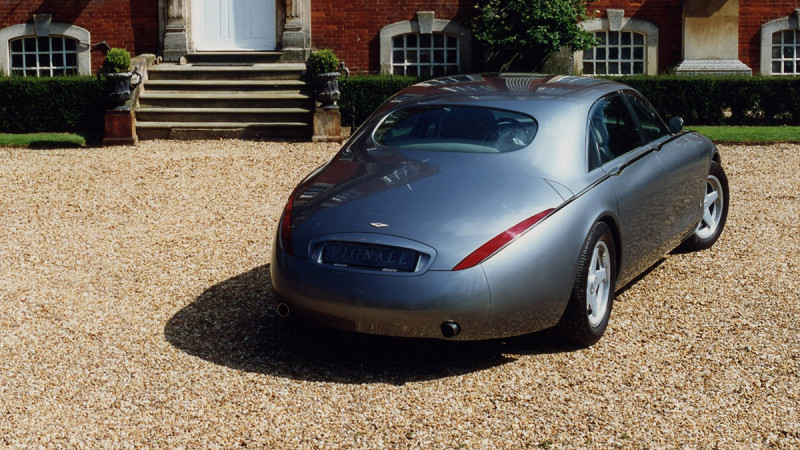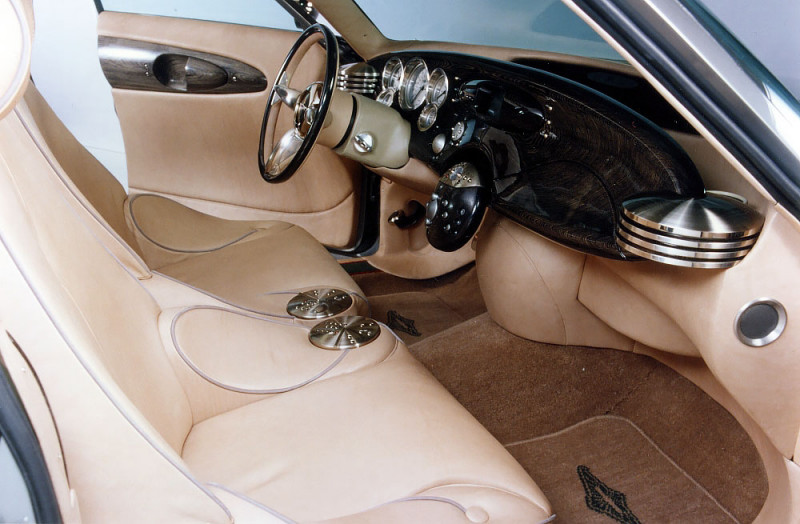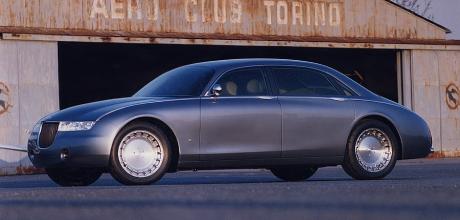1993 Aston Martin Lagonda Vignale
King Baudouin’s Aston Martin DB2/4 isn’t the only Aston Martin linked to the Vignale name; in 1993, AML revealed a concept named after the famous Italian design house.
NAME CHECK
Following the coach-built heydays of the Fifties and early Sixties, Vignale’s services were soon in decline and he sold his company to Alejandro de Tomaso in 1969, dying in a car crash soon after. De Tomaso then offloaded the company to Ford five years later which already owned rival coachbuilder, Ghia. But while the latter’s studio continued albeit integrated into Ford’s, Vignale was discontinued and largely forgotten.

In 1992, Ford commissioned Ghia Design to develop a large, four-door saloon concept that could potentially be put into production. It would see the return of the Lagonda name which had been dormant since production of the William Towns-designed model had finished in 1990.
“Although we have no firm programme for the production of a car of this type,” said Aston Martin Lagonda’s then chairman, Walter Hayes, as a way of explanation, “we believe it is appropriate to investigate and research its appeal with potential customers.”
The car’s shape was the work of Ghia’s Moray Callum, coincidentally the younger brother of Ian who had designed the Aston DB7. With Lagonda not having any consistency in its previous designs, the Scot was able to start with a clean sheet of paper. “We pretty much did what we wanted to do, there wasn’t much DNA to hold onto,” said Moray Callum at the car’s debut. “We just tried to reproduce a flamboyance about the car.”

The car couldn’t have been more different from the previous model of Lagonda if it tried; instead of the famous wedge, the new car had a bulbous, almost art deco-inspired shape that finished with an elegantly tapered and sloping tail. The stubby nose, relatively short overhangs, immense doors, and low rear cleverly disguised the car’s size. Based on the chassis of a 1990 Lincoln Town Car, at 5,236mm long and 1,955mm wide, it was larger than a Rolls-Royce Silver Spirit. The interior was the work of another Scot, David Wilkie, who continued the exterior’s art deco theme and featured lots of circles and soft lines. An English designer, Sally Wilson, then chose natural materials such as aniline-dyed leather, nickel instead of chrome, brass, and beechwood for the instrument panel. The result was a sumptuous atmosphere worthy of the Lagonda badge.
Although it was envisaged any production version would use the new Ford-designed 5.9-litre V12 (that later found its way into the DB7 Vantage from 1999), the concept was instead powered by a 4.6-litre V8 that produced a lethargic 190bhp.
Since 1973, the Ghia name and logo had been associated with the highest trim level of Ford’s passenger cars. So, it was decided to christen the new Lagonda after another Ford-owned design house instead, the long defunct Vignale. Despite the design being generally well-received when it debuted at the 1993 Geneva Motor Show alongside the DB7, Ford got nervous about investing money into relaunching the Lagonda brand and decided to concentrate on the sports car instead.
Ghia built two examples of the Vignale, the non-running silver show car plus a fully functioning second in blue. When it was clear the car wouldn’t reach production, the first was destroyed while the second was sold at an auction of Ford prototypes in June 2002 for $403,500.
A third was later produced, but this time at Newport Pagnell. Code-named DP2138, it was based on a smaller Ford chassis and powered by a Jaguar V12 and although the basic shape remained the same, it featured different headlights and a redesigned grille. It was reportedly sold to the Sultan of Brunei in 1995 for £1.3m.


